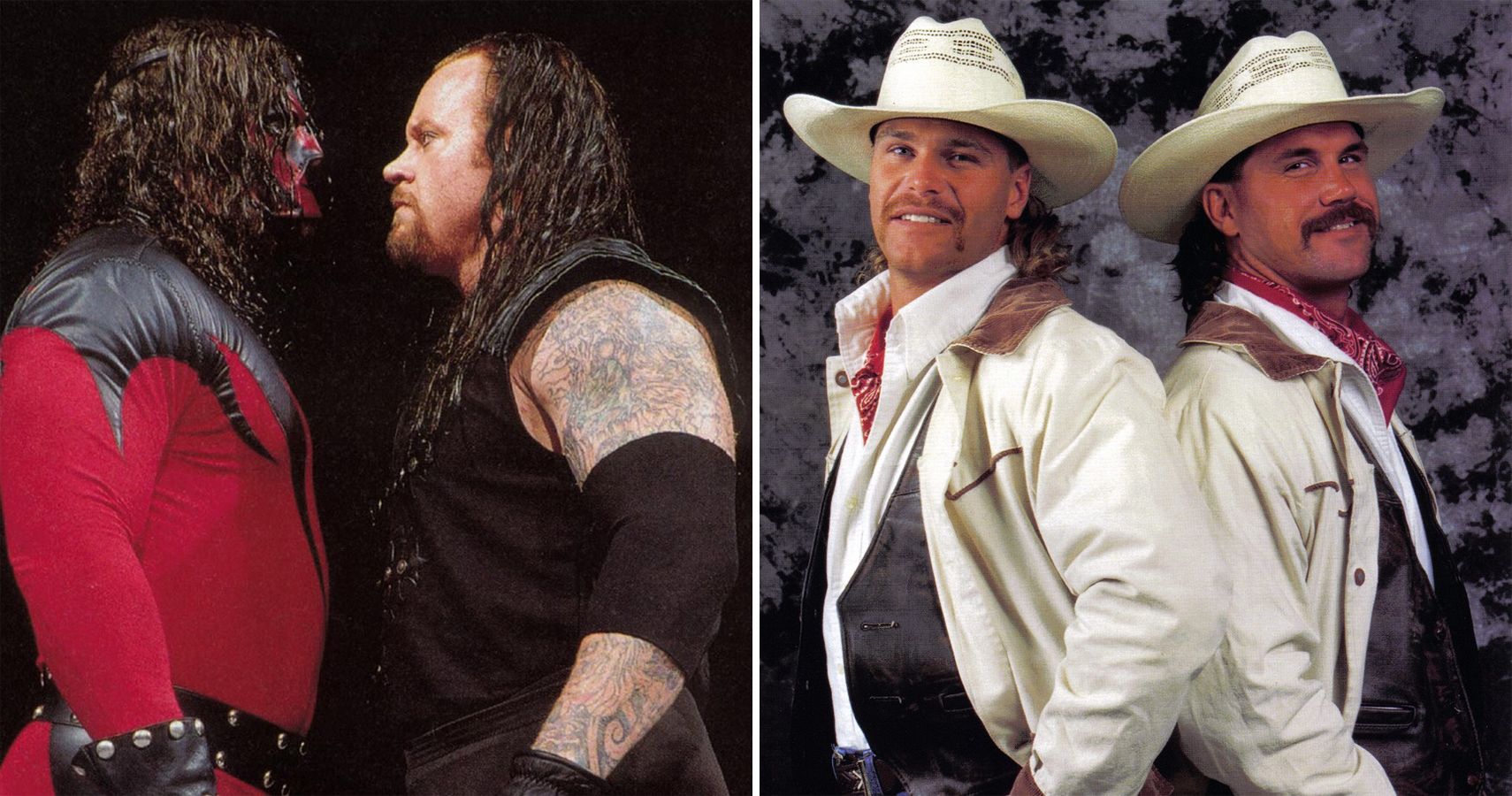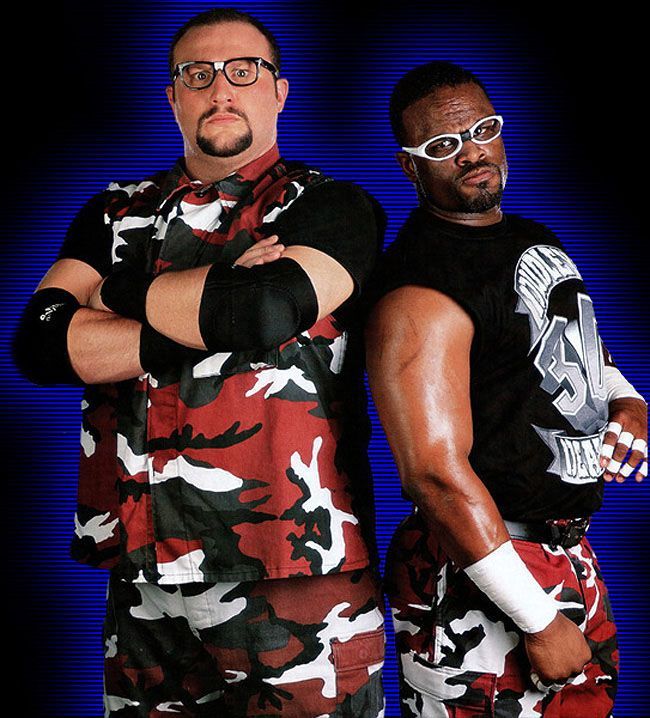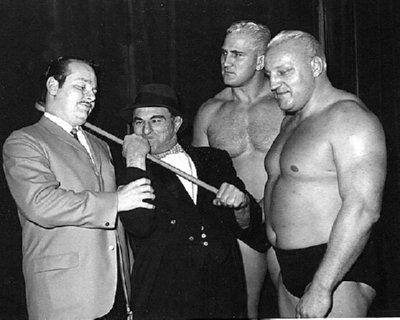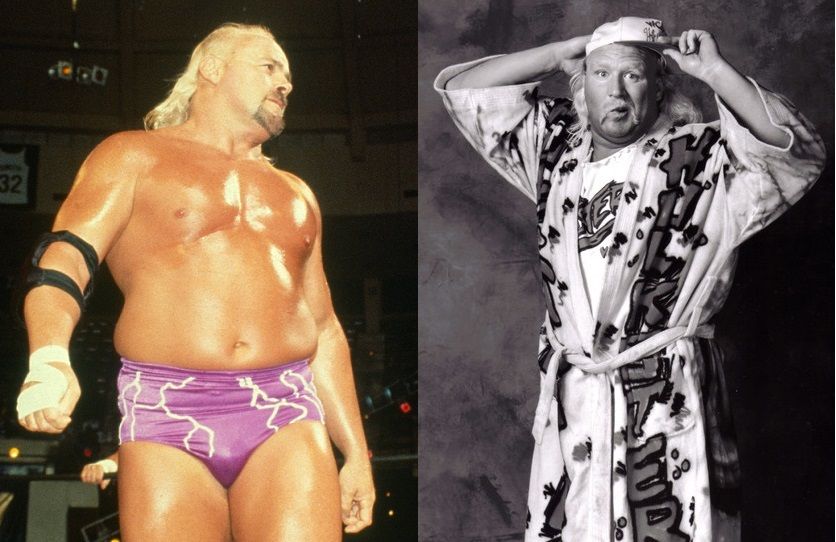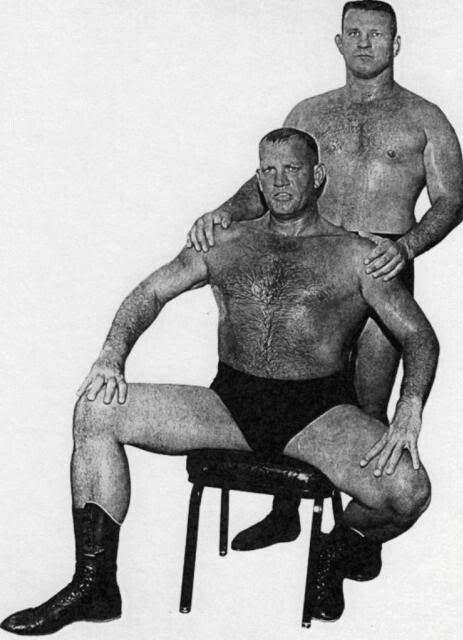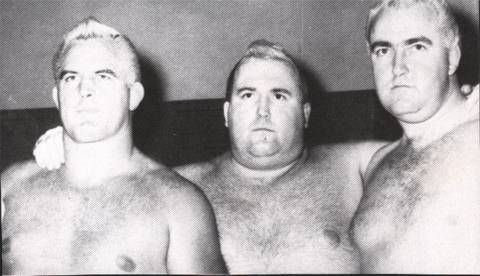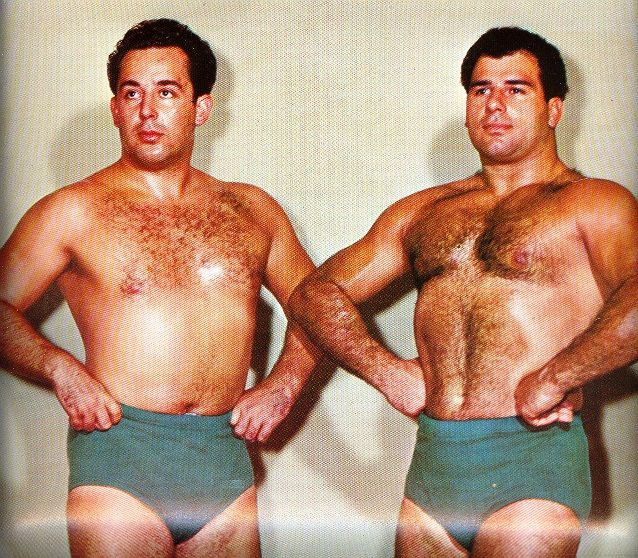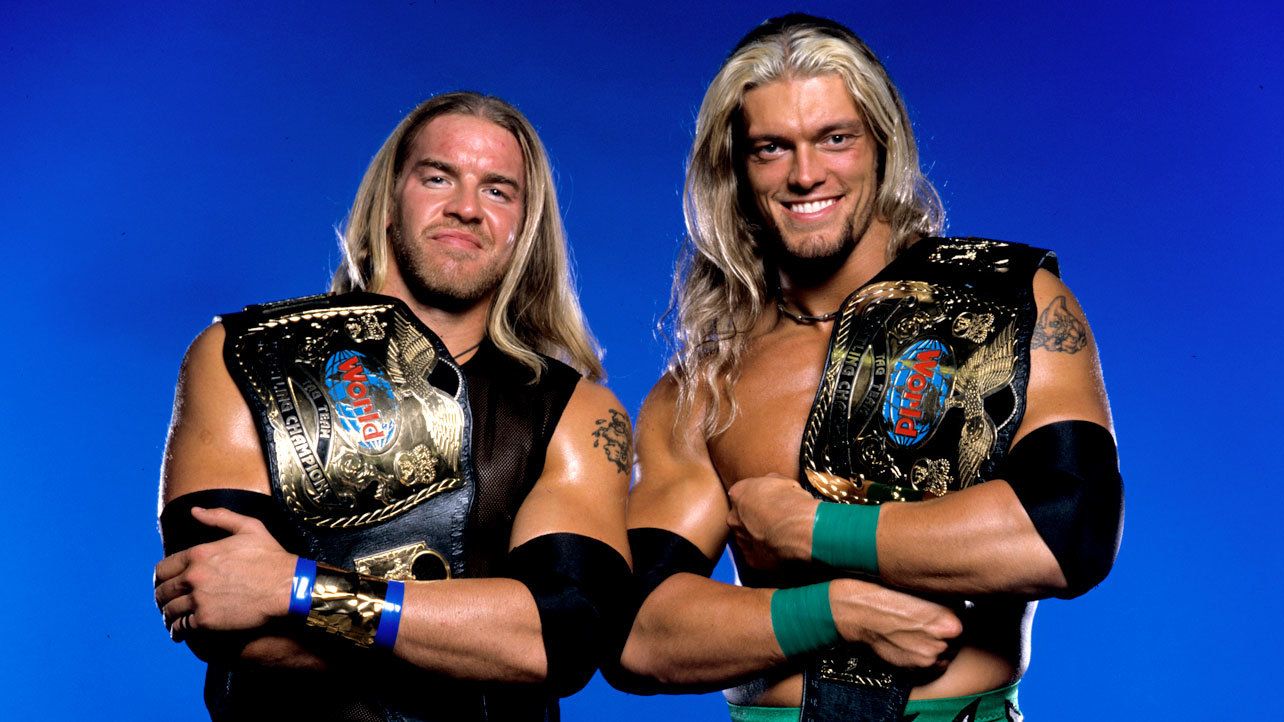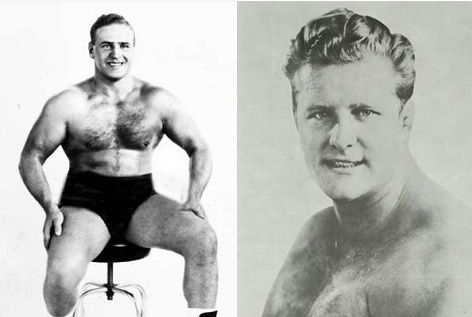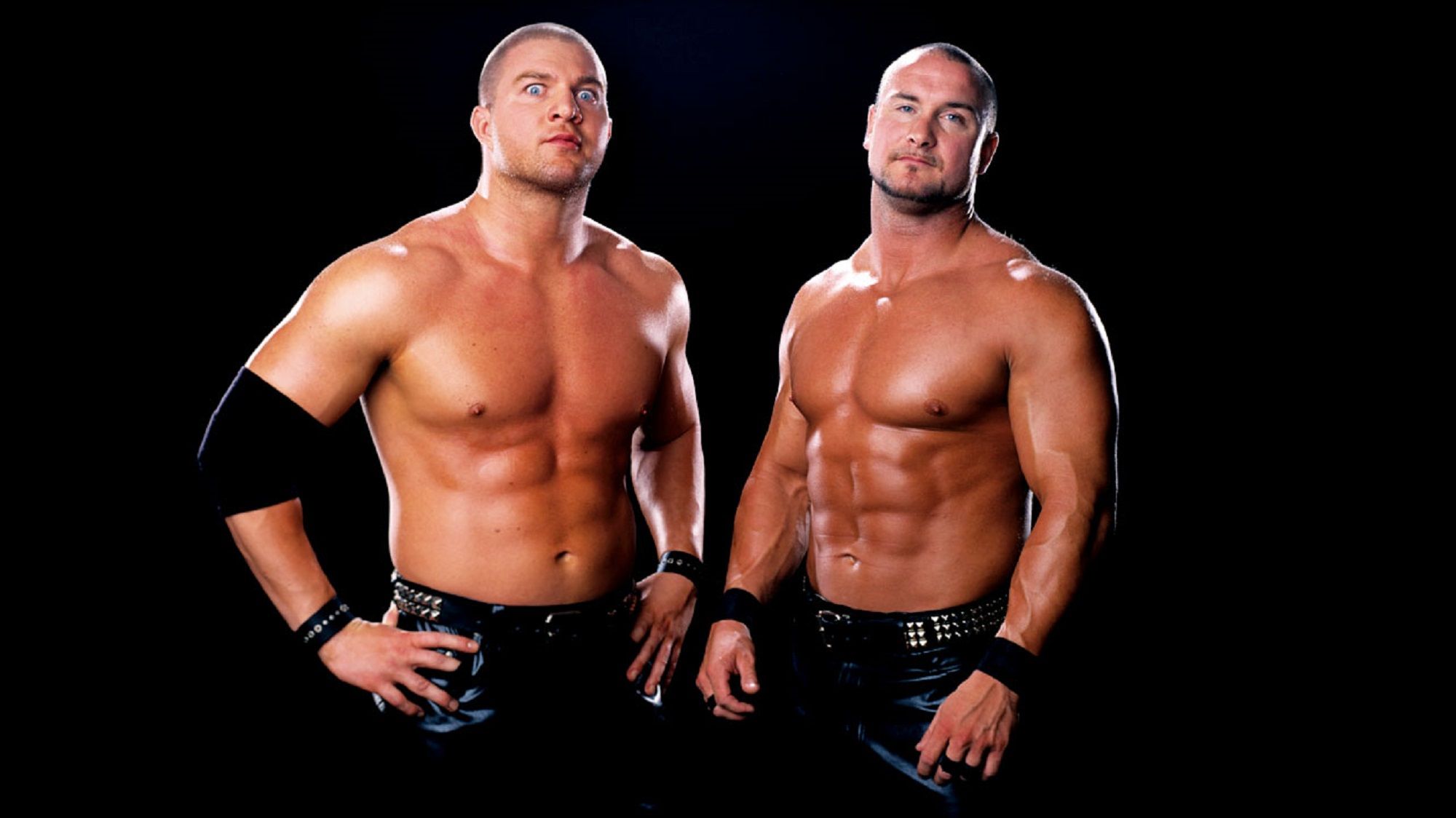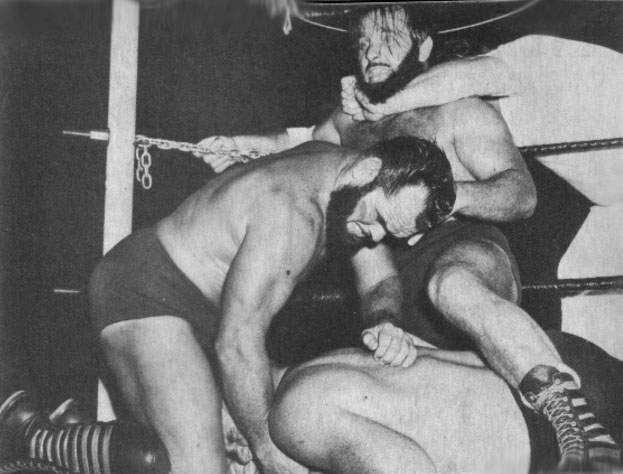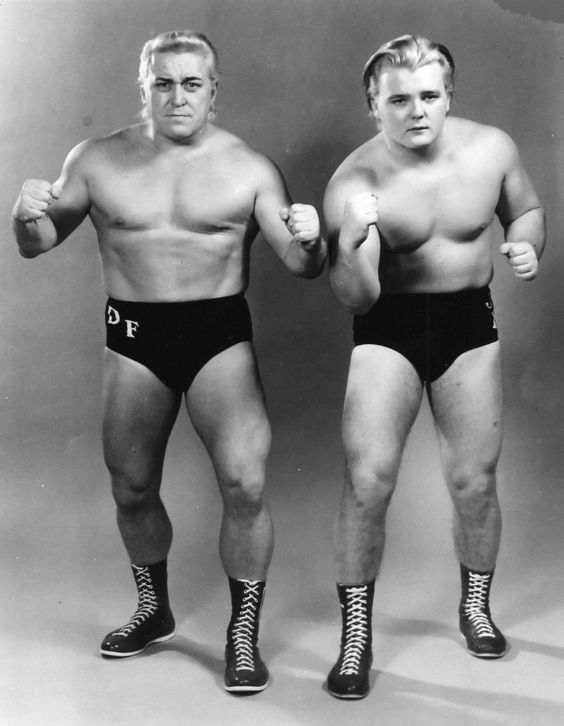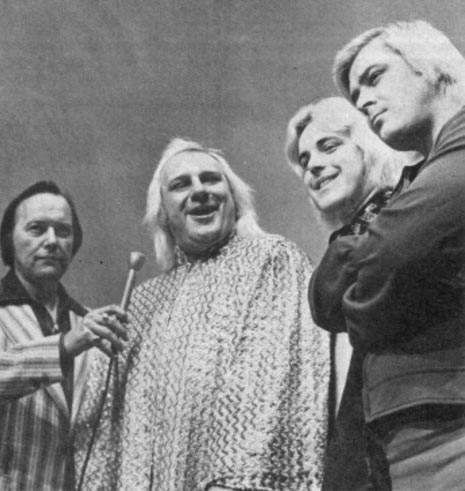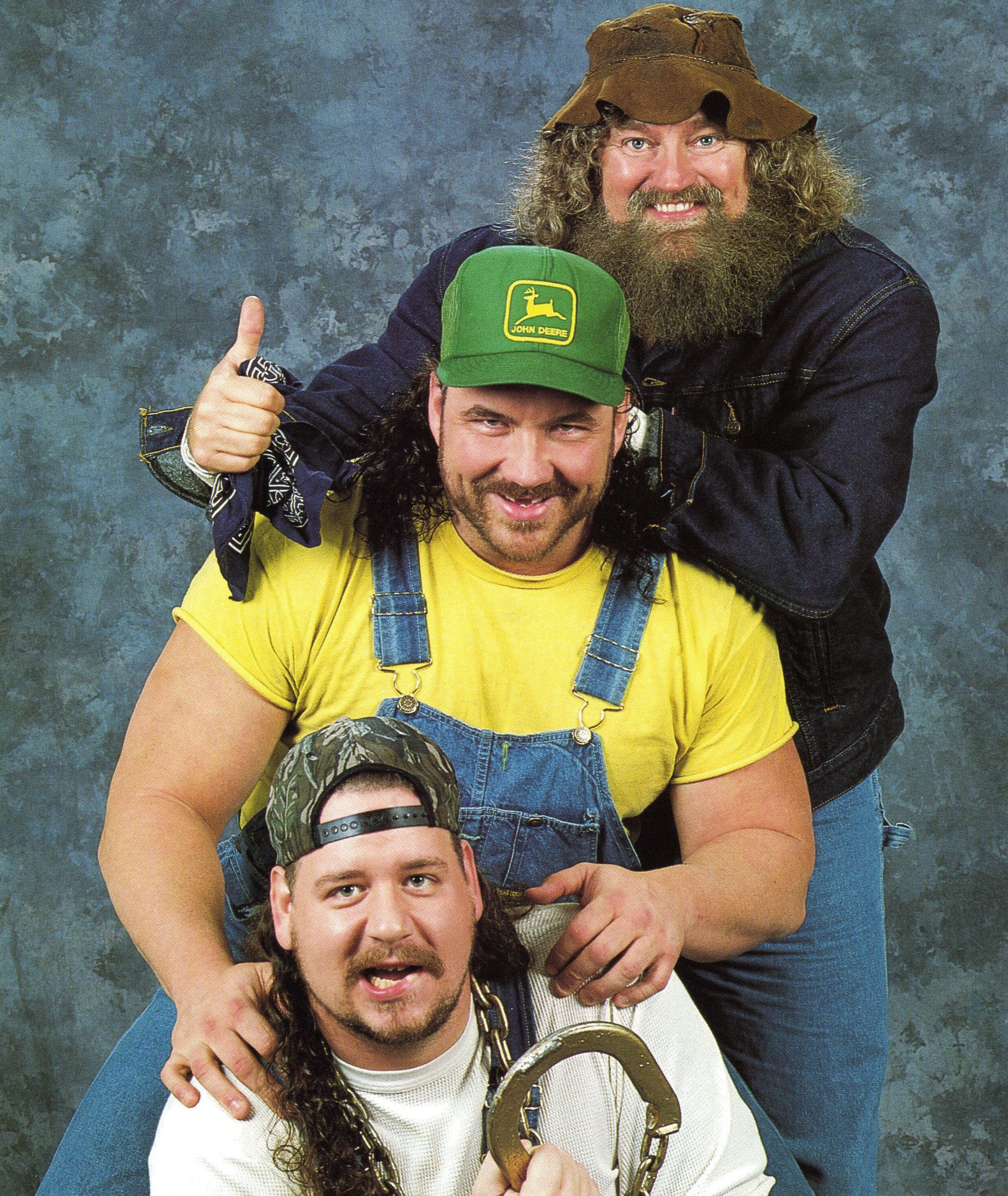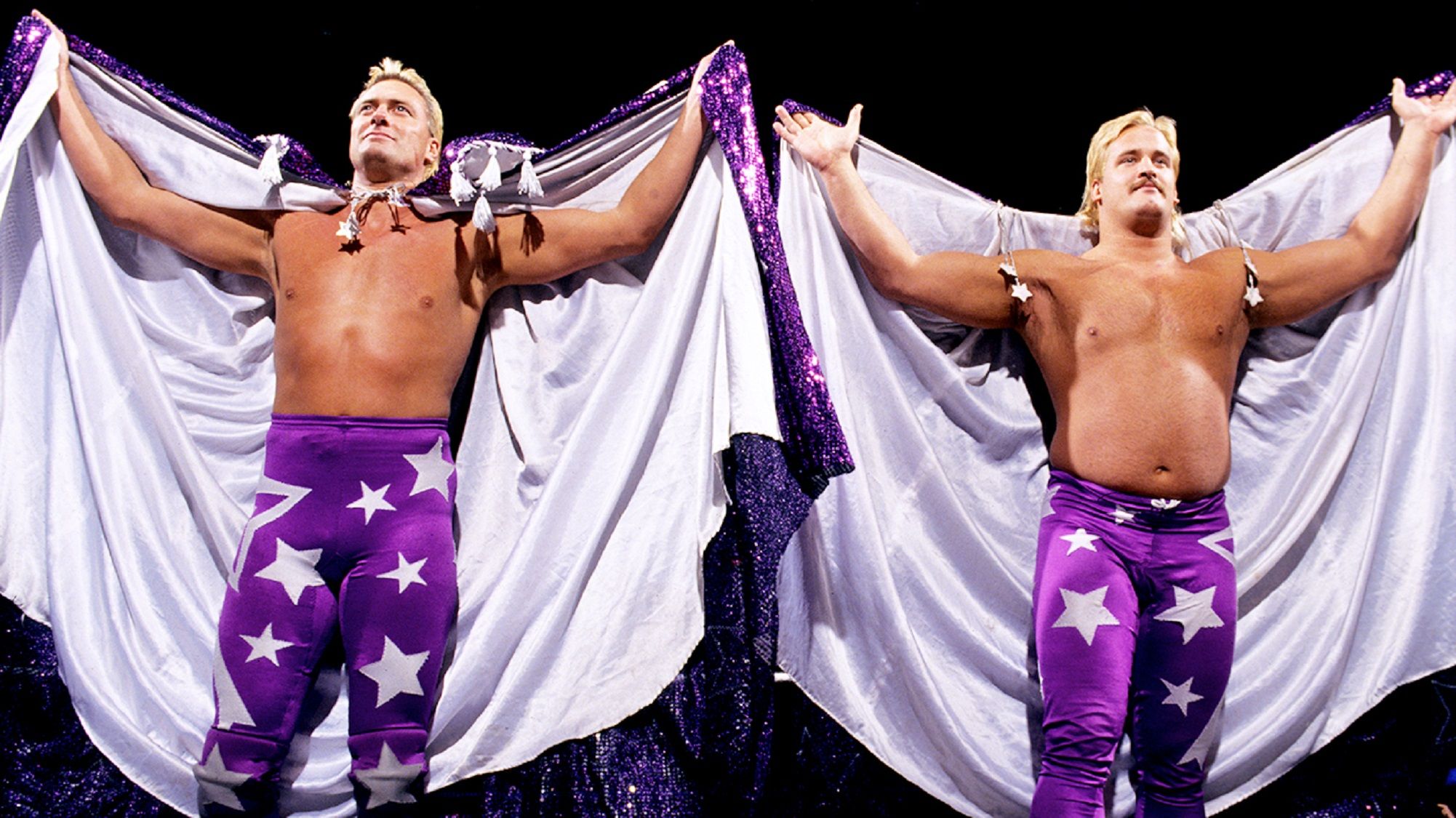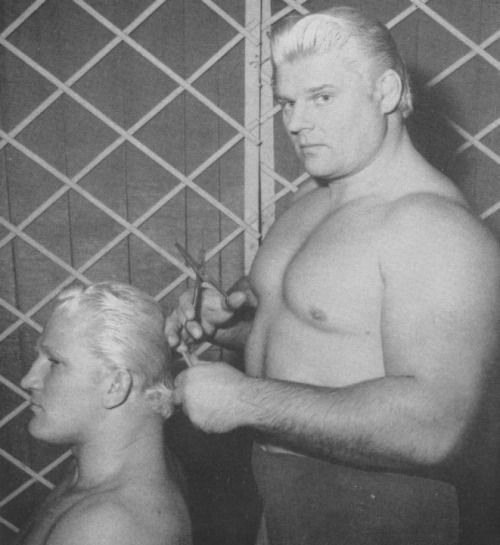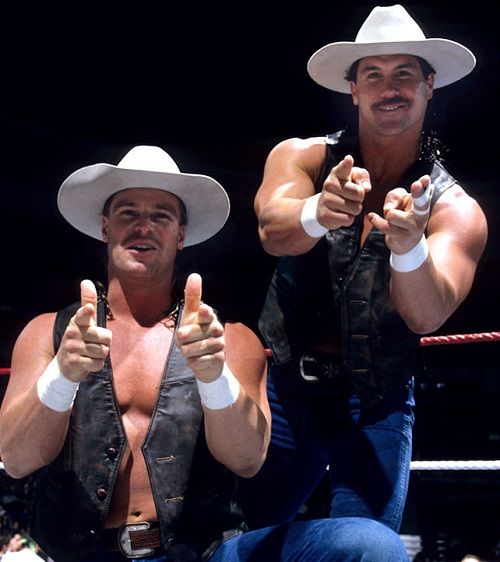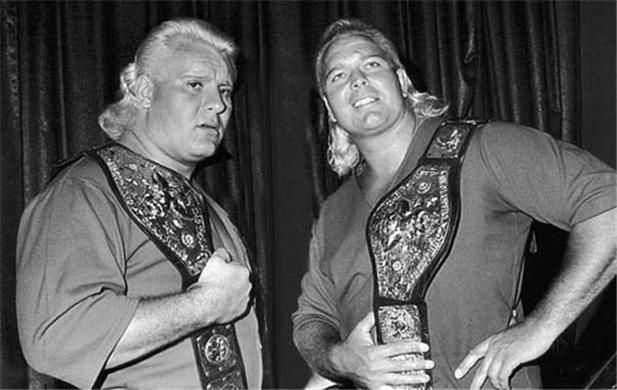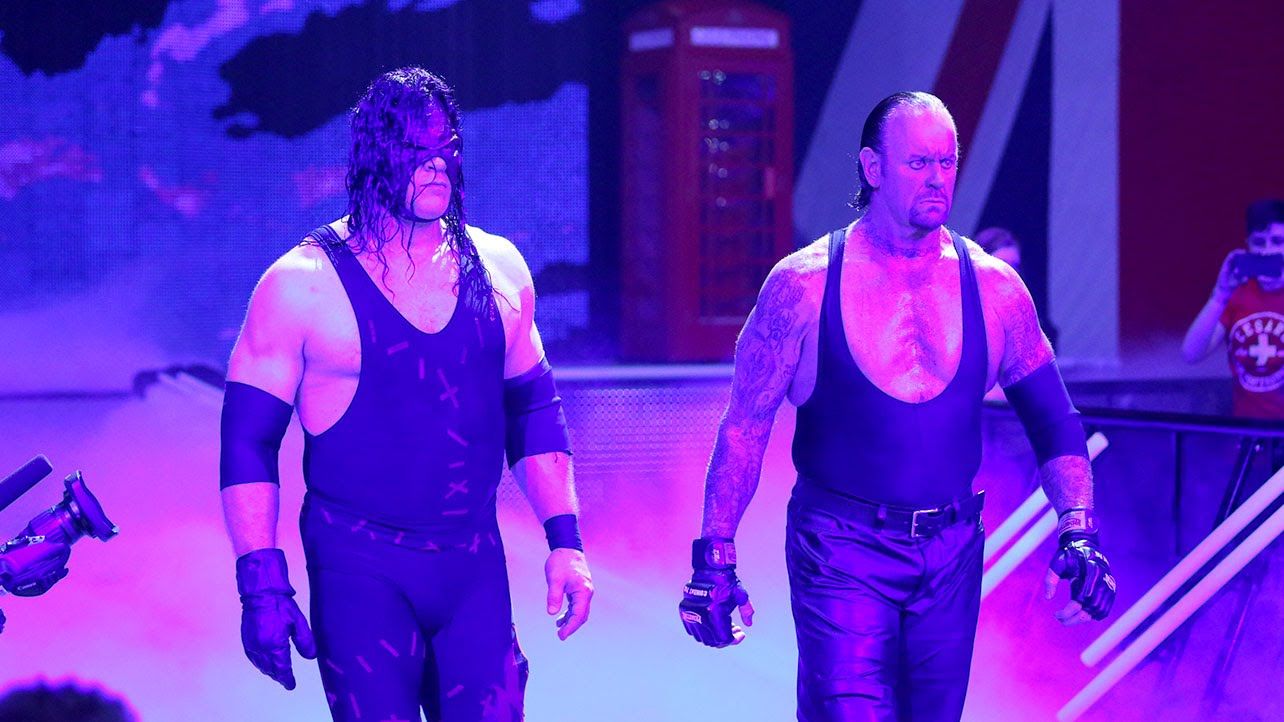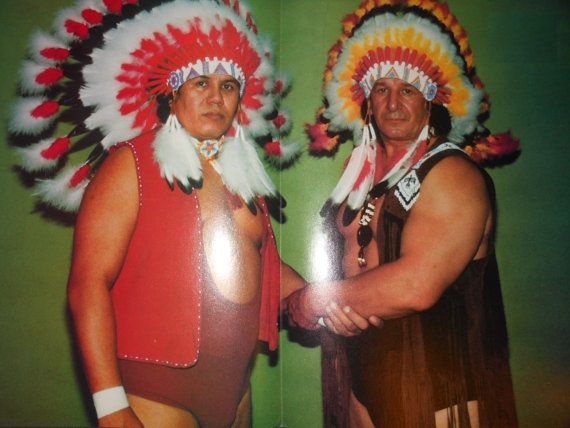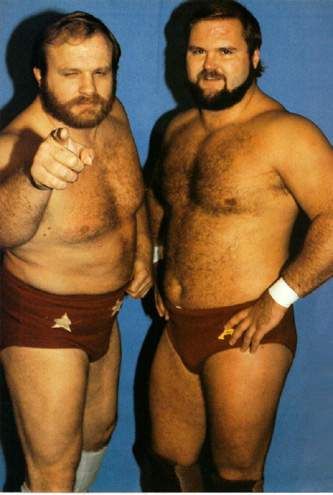The number of family legacies in professional wrestling is a lengthy list. Hart, Von Erich, Rougeau, Anoai, Guerrero and more are all among the grappling clans that have seen multiple generations of their family tree rise to success between the ropes. This has included brother pairings in various combinations that demonstrate that blood is thicker than water.
Brother teams have always held a strong appeal with wrestling fans ever since the origins of tag team wrestling as an organized division in the 1950’s. Nebraska’s Dusek brothers were among the first to rise to prominence as four wrestling siblings that were money-making antagonists in a number of cities across the continent.
But not all teams that have been promoted as brothers were genuinely family. In fact, some of the sport’s most revered family legacies in the ring weren’t brothers at all. The following list exposes some of wrestling’s best kept (and some not so elusive) secrets in tag team wrestling history. While becoming successful and perhaps being as close as brothers through their involvement and travels in the sport, the 20 teams featured here saw great success as a brother act in the ring. But make no mistake, their birth certificates reveal that they aren’t blood.
20 20. The Dudley Boyz
We’re not exactly ripping the lid off of wrestling’s code of secrecy when we start out the list out with the revelation that Bubba Ray and D-Von Dudley aren’t featured in any family Christmas card photos together from their youth. The concept for the Dudleys was born in Extreme Championship Wrestling, where the motley crew of Dudleys included not only Spike Dudley who would join them in the ranks of the WWE, but also a clan with members such as "Big" Dick Dudley, Sign Guy Dudley, and a Native American-dubbed Dances with Dudley.
That said, few teams in the history of the sport can boast the longevity and success that Bubba and D-Von have had over the past two decades. While not brothers by blood, telling the story of either of their careers is impossible to deliver without heavy inclusion of the other. This team epitomizes the notion that family is not only about blood.
19 19. Art & Stan Neilson
In the golden age of tag team wrestling, two blonde heavyweights found success by coming together as a team, capitalizing on their similar looks. Hamilton, Ontario’s Stan Holek and American Art Nelson were a villainous pairing, frequently placed at the top of the marquee across Canada and the United States, lined up against some of the most popular teams of the day. Both wrestlers went on to enjoy lengthy and successful careers. For Holek, who proved to be a versatile performer, his partnership with Nelson would not be the only time that he would take on an assumed name during his career – nor the last time that he would appear on this top 20 list either. Can you guess what Holek’s other brother's act was that achieved a level of notoriety in North American rings? These guys were another examples of "brothers from another mother" in the world of professional wrestling.
18 18. Dave & Kevin Sullivan
Individually, Kevin Sullivan and Bill Danenhauer had amassed a credible track record, so it was surprising when World Championship Wrestling contrived the idea of bringing this mismatched pairing together as a brother act on syndicated television. Danenhauer, who had been wrestling as The Equalizer on the undercard of WCW events in the mid 90s, was given a huge promotion by being paired with Sullivan, a career villain that had been one of the top rivals to Dusty Rhodes in the Florida territory and who had been heavily featured as the head of his own devious stable chasing Hulk Hogan in WCW.
Still, the tag team was pushed through with Kevin as the elder brother constantly trying to get younger brother Dave on the same page. When the gimmick failed to really generate box office appeal, that signaled the end of Dave Sullivan’s career in any incarnation. He moved on to a career with Walmart and was also the offensive coordinator for the Dana College football team in Nebraska.
17 17. Fritz & Waldo Von Erich
Jack Adkisson was a celebrated athlete in his Texas hometown, an All-American boy. But in post world-war America, there was potential to make a lot of money as a German antagonist and his career as Fritz Von Erich was born. Fritz saw success as a solo star and partnered with Lou Sjoberg (aka Karl Von Schober). Things really clicked, however, when Adkisson found a partner of similar size and look in Ontario. Wally Sieber became Waldo Von Erich and the duo went on to enjoy great success as a team, and later in solo careers separately under the Von Erich name. However, while the Von Erich name made its way onto the list, through Fritz and his five sons – David, Mike, Kevin, Kerry & Chris – who would follow him into the sport, there was eventually a Von Erich brother duo who was legitimately connected by blood. The Von Erichs weren’t the only brother act to take advantage of Cold War sensitivities in America to find their way onto this list, though.
16 16. The Grahams
In the 1960s, Bruno Sammartino found himself hounded by Dr. Jerry Graham and his brothers in a number of main events in both solo and tag team competition. Jerry and brothers Eddie and Luke were notoriously flamboyant mat villains with their over-the-top personalities and platinum blonde locks. Brother Eddie was in fact Eddie Gossett and had been wrestling by the name Rip Rogers before becoming a Graham. “Crazy” Luke was Grady Johnson. After their run in the northeast, each went on to solo success – most notably Eddie, who became the czar of wrestling in Florida. Interestingly, Dr. Jerry would introduce another member to the Graham wrestling clan in 1970 – perhaps the most successful Graham, yet. Wayne Coleman had just broken into the sport in Alberta with Stu Hart when he returned home to Arizona and a chance meeting with Jerry led to him becoming younger brother Billy. “Superstar” Billy Graham would go on to unseat Sammartino for the WWE championship and enjoy a lengthy reign.
15 15. Guy & Joe Brunetti
While many of wrestling’s creative brother pairings were villains, one of the top good guy tag teams of the late 1950s was the team of Guy & Joe Brunetti. Guy Brunetti was playing football at the University of Utah before being discovered in professional wrestling. Discovering that tag team wrestling was starting to take off in popularity, Brunetti wanted to cash in on that success and looked to a former football teammate from his days in Utah in Joe Tangaro to become his brother as the Brunetti brothers. They were introduced to fans wearing their letterman jackets from their days on the football field and were instant hits – sent into battle against villains, including the Millers, the Kalmikoffs and the Smith brothers.
Together, the duo traveled the wrestling circuit for 15 years, but their friendship endured even longer. Decades later, even the most devout wrestling fans were surprised to learn that the Brunettis were, in fact, not siblings.
14 14. Edge & Christian
As Canadians Adam Copeland and Jay Reso rose to fame in the WWE, fans were introduced to photos of two blonde youngsters playing in the snow banks of Ontario, pointing to a lifelong connection between the two long-haired upstarts during a period when the WWE was developing new stars. Edge and Christian do share an early wrestling connection, having both trained in Toronto’s Sully’s Gym under mat veteran Ron Hutchison. The pair also traveled and teamed together across Canada and were enrolled in a camp together as they prepared for their WWE debuts. Now, close to 20 years later, the lifelong friends continue to be featured on the WWE network side by side. Over time, as the WWE started to pull back the curtain on its roster and venture into more reality-based programming, they have eased up on references to the pair as brothers – but that’s not the case with another fictitious brother duo that was invented by WWE writers that also appears on this list.
13 13. Roy & Don McClarty
We are dipping further into the classic wrestling bag on this duo of "brothers." Winnipeger Roy McClarty had enjoyed a successful career in England and the United States for close to a decade when he first found himself partnered with New Yorker Donald Leeds and together, they were billed as the McClarty brothers. As a pair, the team traveled the wrestling territories, seeing championship success on a few occasions along the way. Even after the partnership ended and Roy was winding down his active career as a competitor, younger brother Don retained the McClarty name and took it with him to the WWE, where he would hold the U.S. tag team championship with Argentina Apollo in 1964, defeating legitimate brother duo Chris & John Tolos, then dropping the belts to another team featured on this list – Jerry & Luke Graham. Another great example of a manufactured set of brothers who entertained wrestling fans.
12 12. Doug & Danny Basham
The Ohio Valley Wrestling circuit in Kentucky helped to produce and develop a number of stars for the WWE at the start of the 21st century. Names like Randy Orton, John Cena and Brock Lesnar were all put through their paces in Louisville under Danny Davis and Rip Rogers as they prepared to make their debuts on the national stage. The environment was also developing another crop of emerging stars such as Nick Dinsmore, Rob Conway, Doug Basham and a bruiser known as the Damaja. Basham was partnered with Dan Hollie, who would become his brother and the Bashams garnered a moderate degree of success on the WWE’s SmackDown brand, winning the brand’s tag team championships. After five years together in the WWE, the duo reunited under the TNA banner and have been booked as a duo in several other matches in the U.S. and beyond, further underscoring how convincing they were as brothers.
11 11. Ivan & Karol Kalmikoff
This tag team may provide one of the biggest surprises of the list. The "Russkie" team that became a box office sensation for promoters across North America in the 1950s was actually comprised of two gentlemen who were not brothers at all. What may be more surprising is that brother Karol, actually Polish-born Karol Piwoworczyk, had actually screen tested for the role of Superman in the television series not long before his path steered him toward wrestling and into probably the most opposite character role of the Man of Steel as you could possibly get. Ivan Kalmikoff was actually Edward Bogucki of Detroit.
Together, bearded and sporting Bolshevik hats and coats, they were the top fiends of the wrestling world. Later, a third brother, Nikita, was added to the fold. Nikita was, in fact, Newfoundland, Canada-born Eric Pomeroy. Pomeroy himself would later go on to become a Vachon brother as well in his career, among other names by which he would wrestle.
10 10. Don & Johnny Fargo
What may be shocking to some long time wrestling fans is that this brother tag team featured one member that was already part of an established wrestling family. Why, or perhaps how, the son of a wrestling headliner could fly under the radar to appear by another surname is somewhat of a mystery. But that is indeed the case when Don Fargo paired with Jonathan Wisniski Jr. as his sibling, Johnny Fargo. Wisniski, of course was Greg Valentine, the son of main eventer Johnny Valentine. The Fargos appeared across the Midwest and even made their way to Canada in the early 70s, before Valentine moved on to other opportunities.
Interestingly, a few years later, Valentine would team with his famous father, but the elder Valentine being somewhat sensitive about his age, did not allow promoters to bill them as a father-son duo, but rather as brothers instead. A prime example of vanity at its best.
9 9. The Garvins
Just about all you will find in common between the Garvins is that they are both from Quebec, Canada and they both had blonde hair. Terry Joyal had already been wrestling for a few years under the name Terry Garvin when Montrealer Roger Barnes broke into the wrestling game. Together, they became the Garvin brothers and began wreaking havoc as a duo in Louisiana in 1964. Together, they toured Florida, the Carolinas, Quebec and Ontario. After seven years as a team, their paths took them in different directions. Terry would go on to administrative roles for promoter Bill Watts and later Vince McMahon, while Ronnie would continue to forge a solid reputation for himself as a wrestler, ascending to the NWA World title. Later, Ronnie would team with his step-son, James Williams, who would assume the Garvin name as “Gorgeous” Jimmy Garvin. Jimmy is the only Garvin to date to be inducted into the WWE Hall of Fame, as a member of the Fabulous Freebirds tag team.
8 8. Henry & Phinneas Godwinn
Wrestling audiences were first introduced to the duo that would become the Godwinn brothers in World Championship Wrestling, where they were paired as the undercard team of Tex Slazenger and Shanghai Pierce. The team had first met in Tennessee while wrestling for the circuit there and had wrestled a few matches as a team before they were reunited as a pair of ornery outlaws in WCW. After two years in virtual obscurity, Pierce (Mark Canterbury) was signed to the WWE and Slazenger (Dennis Knight) followed soon after that. Billed as Arkansas hillbillies, their assigned characters were a not-so-subtle play on words. Canterbury was billed as Henry O. Godwinn (HOG) and Knight was dubbed Phinneas I. Godwinn (PIG). The team was able to ascend in the WWE and even found themselves wearing gold as WWE tag team champions. Among their biggest rivals during their title run is another brother team that appears on this list – and with whom they battled over the services of their valet, Sunny.
7 7. Beau & Blake Beverly
By the time they debuted in the WWE in 1991, wrestling fans were accustomed to seeing Beau & Blake Beverly together in the ring. Both members of the team were alumni of the Eddie Sharkey wrestling camp in Minneapolis. Sharkey's a trainer that was also responsible for introducing the Road Warriors -- Animal and Hawk. While each experienced a rather unremarkable rookie year in solo action, when they teamed up in 1989 as The Destruction Crew in the AWA, Wayne Bloom and Mike Enos not only won the AWA World tag team titles, but also became the first team in history to win the Pro Wrestling Illustrated rookie of the year award. They moved on together to WCW the following year where they were put under masks as the Minnesota Wrecking Crew II and managed by Ole Anderson. There, they challenged the Steiner brothers for the first time, a rivalry which would be renewed under the WWE banner two years later. As brothers, it appeared that there was a bright future for the team, but after two years, they failed to reach the top of the tag team division and Beau Beverly (Bloom) went into semi-retirement.
6 6. Stan & Reggie Lisowski
There is a bit of a love triangle involved when it comes to the Lisowski brothers tag team. Not long after his introduction to the sport, Milwaukee’s Reggie Lisowski formed a successful tag team with fellow wrestler Art Nelson. After the team dissolved, both Lisowski and Nelson went on to form brother act teams – incidentally with the same partner. Ontario’s Stan Holek would spend time as both Stan Neilson with Art and as Stan Lisowski with Reggie. You may recall my reference to this brother duo earlier on this list. With both partners, Reggie would hold the Chicago version of the NWA World tag team titles. However, it was with Stan that Lisowski saw greater success. That is, until he partnered with Dick Afflis of Indiana, best known as Dick the Bruiser.
The team of The Crusher and The Bruiser would go on to become one of the most revered teams in professional wrestling history.
5 5. Billy & Bart Gunn
On horseback, the brother duo of Billy & Bart Gunn were introduced to WWE audiences through a series of vignettes that hyped their impending arrival in 1993. The popular cowboy team would go on to hold the WWE World tag team titles three times over the next few years. While they were easily accepted as a handsome pair of brothers fresh off the family ranch, Billy (Monty Sopp) and Bart (Mike Polchlopek) bear no blood ties. The pair did, however, get their start together under veteran wrestler Blackjack Mulligan in his independent promotion in Florida. There, they portrayed a cowboy team as well under the names Kip Winchester (Billy) and Brett Colt (Bart).
Both “brothers” went on to greater success after the demise of their partnership with Billy becoming one half of the New Age Outlaws, securing multiple WWE tag team championships and Bart seeing moderate success in Japan in tag team competition.
4 4. The Valiants
Perhaps drawing from the model of success that the Grahams had created a decade earlier, the northeastern U.S. was terrorized by another blonde trio of brothers. Under the management of the outspoken Lou Albano, “Handsome” Jimmy, “Luscious” Johnny and “Gentleman” Jerry Valiant posed a serious threat in any combination. In truth, Jimmy was Tennessee-born James Valen, starting his career in 1964. He met Johnny, Pittsburgh’s Thomas Sullivan, on a tour for Ontario promoter Dave McKigney in 1973. Valen took a liking to the young upstart and put in a word to get the youngster booked as his brother in Indiana for promoter Dick the Bruiser and just like that, the Valiants were born. When they arrived in the WWE, they added a third brother, Jerry, who was better known by the name Guy Mitchell in a number of locales. The Valiants – Johnny & Jimmy – were inducted into the WWE Hall of Fame in 1996.
3 3. The Brothers of Destruction
Few wrestlers in the history of the WWE made a more explosive and memorable debut than Kane, introduced to viewers as the long lost brother of popular headliner, The Undertaker. Through a series of corny vignettes and staged “candid” backstage interviews, manager Paul Bearer told the tale of the brothers, weaving a back story about a terrible fire that was a dark secret in The Undertaker’s past. After a lengthy feud against one another, the estranged brothers eventually formed a partnership and their on-again, off-again alliance has produced championship success. While many secrets have been revealed in the WWE and the world of wrestling, the brotherhood of Kane and Undertaker seems to be one that the company is not willing to let go of, still identifying the men as the Brothers of Destruction even two decades later. In truth, Mark Calaway (Undertaker) and Glenn Jacobs (Kane) share only some common experiences in their path to the WWE, having paid their dues in the same Tennessee wrestling territory (under some less than awe-inspiring monickers).
2 2. Jay & Jules Strongbow
In American pop culture, whenever it was a case of cowboys and Indians, the Native Americans were often portrayed as the villains. However, in the world of professional wrestling, aboriginal culture is most often celebrated and in the case of the Strongbow brothers, they found themselves as American patriots, turning back the threat of foreign antagonists such as Mr. Fuji & Toru Tanaka and the Wild Samoans. In truth, the Strongbows weren’t brothers; they were not even both natives. Chief Jay Strongbow was Italian-American Joe Scarpa. Scarpa had actually wrestled for 23 years all around the world under his own name before Vince McMahon Sr. decided to dub him as Strongbow in 1970. He was a popular attraction and held the WWE tag team titles on two occasions with different partners before he was paired with Jules Strongbow (Francis Huntington) in 1982 for a third title run, and then a fourth.
1 1. The Andersons
It is possible that no name in professional wrestling bears more fictitious bloodlines than that of the Anderson clan. It has almost become a jigsaw puzzle of wrestling lore to try to connect the dots. The family lineage starts with Gene Anderson. Gene was born in Minnesota and debuted in 1961 after being trained by Verne Gagne. In 1965, Gene was wrestling in the southern states when he introduced brother Lars (Larry Heinemi) to audiences and the brother team was billed as the Minnesota Wrecking Crew. In 1969, Lars was replaced by Ole Anderson (Al Rogowski), and the team forged one of the most prolific tag team duos of all time. Gene & Ole held sway in the Carolinas and Georgia, where they laid claim to multiple titles as a team. Georgia’s Marty Lunde later become a cousin, Arn Anderson. When Rogowski’s son followed in his father’s footsteps, he enjoyed a short career as Bryant Anderson in the 1990’s. In more recent years, other wrestlers have adopted the Anderson name, including ECW’s C.W. Anderson and Music City Wrestling standout Andy Anderson, though their connection to the Anderson bloodline is equally imaginary.

